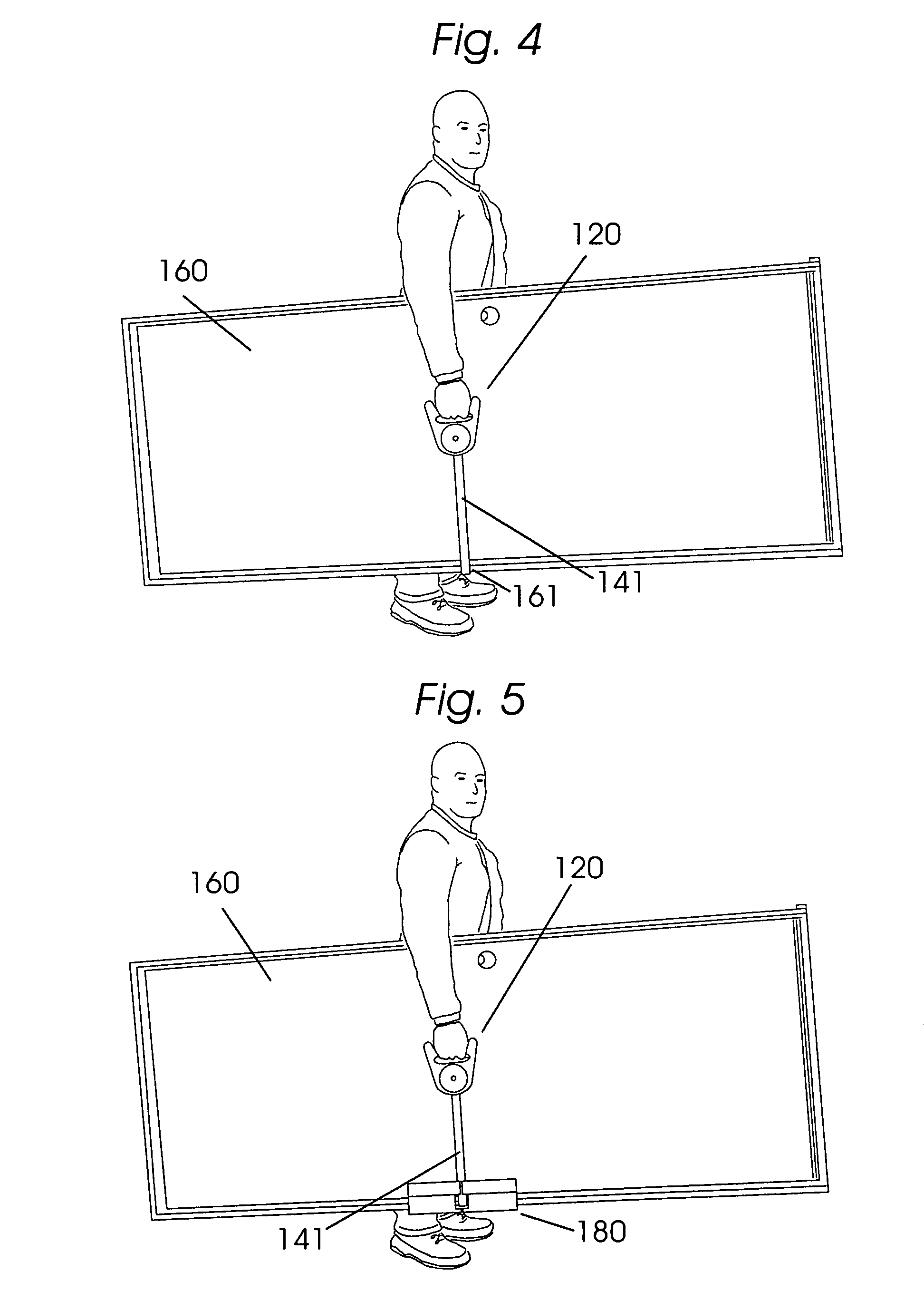Machine and process for personal, side mounted biomechanically engineered lifting device; a device for lifting awkward and heavy loads
a biomechanical engineered, machine and process technology, applied in the field of practical methods of lifting heavy loads, can solve the problems of tearing muscles, back pain, heavy loads people carry with their bodies,
- Summary
- Abstract
- Description
- Claims
- Application Information
AI Technical Summary
Benefits of technology
Problems solved by technology
Method used
Image
Examples
Embodiment Construction
[0059]Detailed descriptions of the preferred embodiments are provided herein. It is to be understood, however, that the present invention may be embodied in various forms. Therefore, specific details disclosed herein are not to be interpreted as limiting, but rather as a basis for the claims and as a representative basis for teaching one skilled in the art to employ the present invention in virtually any appropriately detailed system, structure or manner.
[0060]In accordance with the present invention, a side-mounted biomechanical lifting harness 100 is shown fitted to a person 99 about to lift a load. The shoulder load harness means 101 shown in FIG. 1, crosses the user's body diagonally and is connected by an adjustable harness buckle connector means 102. The load harness is adjusted so that the harness-load support means 103 supports the load height adjustment strap 110 and the load support ring 104 at or below the user's waist. The load height adjustment strap 110 is designed to ...
PUM
 Login to View More
Login to View More Abstract
Description
Claims
Application Information
 Login to View More
Login to View More - R&D
- Intellectual Property
- Life Sciences
- Materials
- Tech Scout
- Unparalleled Data Quality
- Higher Quality Content
- 60% Fewer Hallucinations
Browse by: Latest US Patents, China's latest patents, Technical Efficacy Thesaurus, Application Domain, Technology Topic, Popular Technical Reports.
© 2025 PatSnap. All rights reserved.Legal|Privacy policy|Modern Slavery Act Transparency Statement|Sitemap|About US| Contact US: help@patsnap.com



